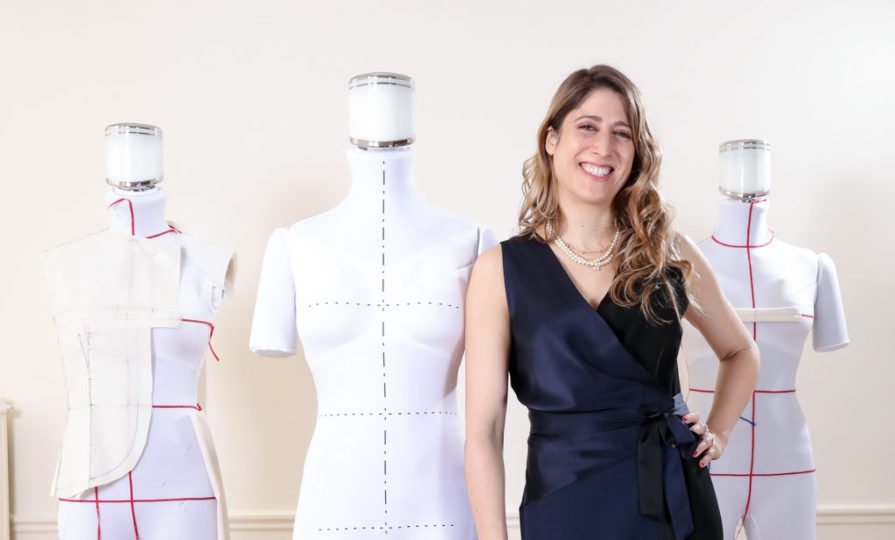How can fashion-tech help the fashion industry work more efficiently?
By Audrey-Laure Bergenthal, founder and CEO at Euveka

Nowadays, many startups are setting up fashion tech apps in the retail industry: 3D body scan, data analysis, online recommendation, or advice for helping customers to shop with a conscience. It’s great that so many players and brands are participating in this change, but it only addresses part of the issue. Still, size suggestion is often unprecise and unreliable, and 3D modelling solutions in the manufacturing industry are limited. On the screen everything looks perfect, but in real life that’s not quite it.
It is important to remember that the textile industry targets real people with different morphotypes and comfort preferences that have changed, and the standard type of customer has evolved.
But there is a missing link between what retails knows, what manufacturers do, and what customers want. Fashion tech can improve the textile industry efficiency here, by linking production, retail, and customers through two main changes:
- Better knowledge of the market: optimal size recommendations can be offered online by digitalising the supply chain and matching customer data with apparel market data.
- The implementation of preventive phygital solutions to control the fit in all sizes with data in real-time before the “go” at the production level.
Furthermore, brands need to enhance customer awareness to learn more about their morphology and inspire them to provide their measurements and needs to get a unique shopping experience, a perfect meet and match!
Data must flow between industry players
The textile industry has archaic processes that must change quickly. Overproduce without really knowing its market and working on rigid wooden mannequins that do not represent anyone can no longer continue.
The brands’ problems are mainly with small and large sizes and obviously with atypical sizes. Besides, fashion must consider the size difference between a 20-year-old young woman and a 50-year-old woman who are both size 38, or the body differences between different ethnicities. There are solutions to capture this data and feed it back to the manufacturing process. Factories must be equipped with technology capable of processing this data using connected mannequins to really see the fit of the garment.
The customer needs personalisation but brands must give more meaning to the customer relationship. All stakeholders must play the game. To produce better and greener in every size, marques also need customer data and feedback on their collections. To optimize inclusion processes, data must transit from conception, production to retail.
Connected the high know-how and expertise of the textile industry with the newest technologies is essential to remain competitive. Inclusion is the key to being more sustainable and more efficient.
Create, produce and sell better
There are many gains for brands, customers, and the environment too. For brands, for example, work with innovative and highly precise tools help to adapt production as closely as possible to body diversity and to maximise sales in all sizes. In addition, analysis and data collection is a powerful source of information. Imagine that e-commerce and retailers could quickly understand why a product is not selling or is returned, and quickly resolve the problem thanks to fashion tech.
Brands will increasingly retain customers who are confident that they can safely purchase clothing that matches their size. There is a huge market share — almost 62% of women and 49% of men in UK purchased online clothes in 2020 –– to be taken, especially with people who do not order on e-commerce sites because they have been too often disappointed, or they know that the brand’s model does not fit with their body types.
For customers, obtaining the certification of purchasing the right garment without returned it for size adjustment issues is very positive for carbon impact and logistic costs. The fact is that, as we speak, the textile industry accounts for 10% of the carbon footprint, with one of three garments returned, mostly due to a bad fit or incorrect sizing… It’s a disaster for the environment and client satisfaction.
Also, fashion tech facilitates remote clothes hygienic fittings and there is no need to wear the garment on the client due to current sanitary norms.
Better targeting the market allows to produce better with reliable data and therefore reduce returns and unsold products, from 30% up to 50% less, which translates into better sales.
The future of fashion will be the link between craftsmanship and fashion technology to magnify the craftsman’s gesture and preserve and perpetuate the know-how of these professionals. This sector needs to create and visualise the fit of the garment in real because 3D is not sufficient to predict the fitting well.
Modernising processes in the textile industry is an emergency, experts in data scientists and engineers can accompany this change in developing dedicated solutions to certify a CSR approach in an economic logical performance.
Audrey-Laure Bergenthal is the founder and CEO at Euveka



